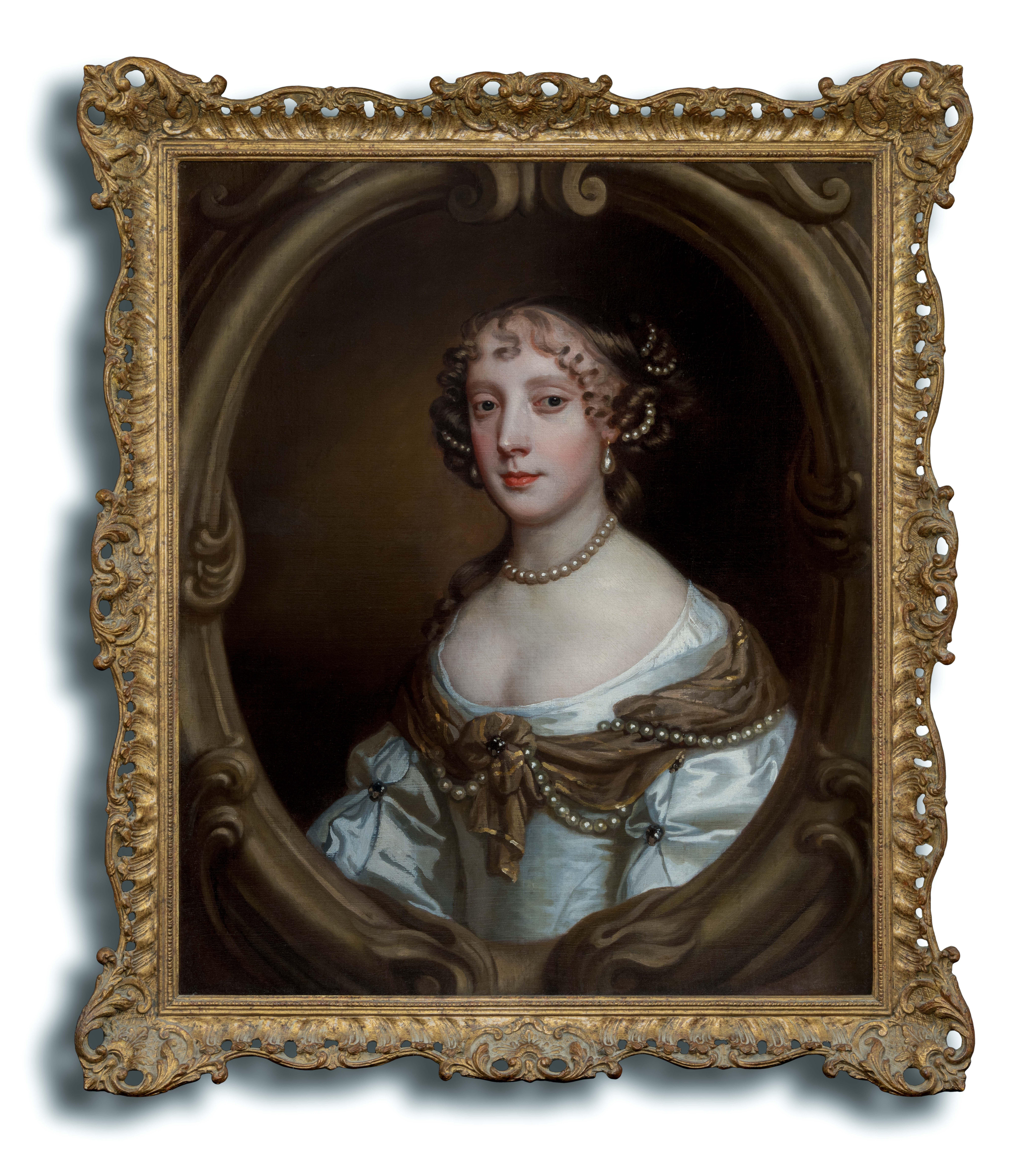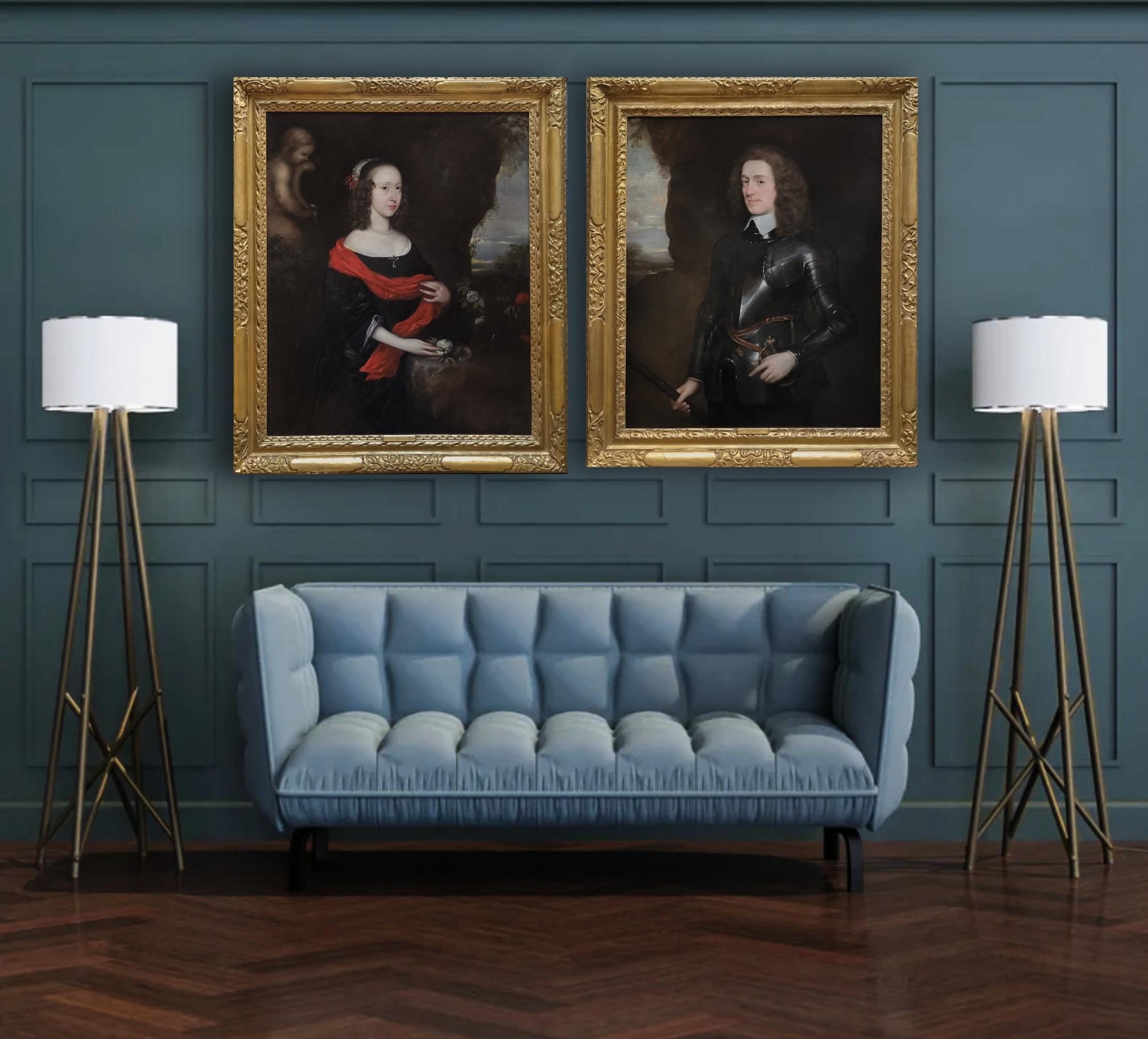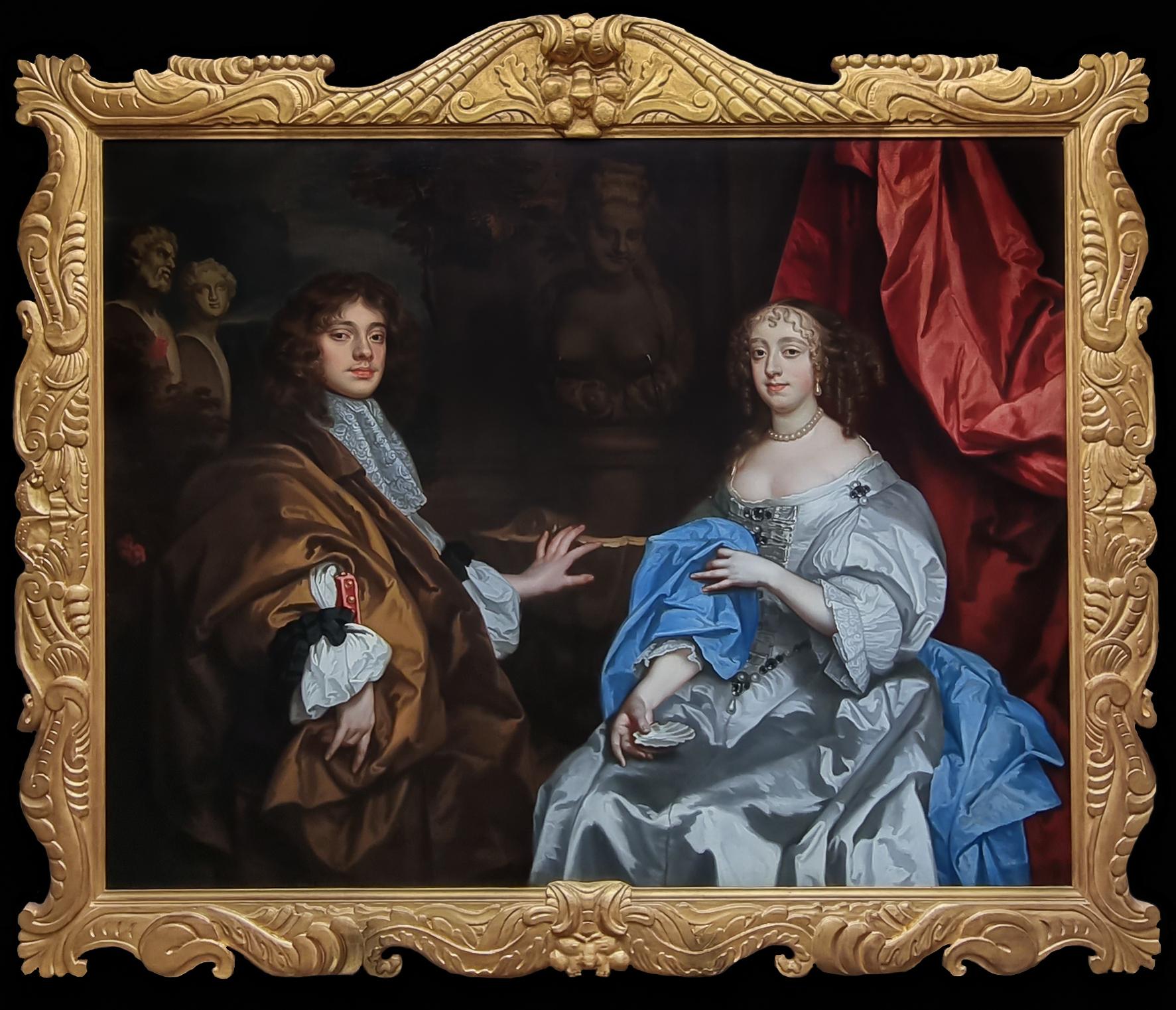Items Similar to Portrait after Franz Josef Winter, Clemens August of Bavaria, Archbishop Cologne
Want more images or videos?
Request additional images or videos from the seller
1 of 20
UnknownPortrait after Franz Josef Winter, Clemens August of Bavaria, Archbishop Colognecirca 1720
circa 1720
About the Item
Clemens August Ferdinand Maria Hyazinth, Duke of Bavaria (* August 16, 1700 in Brussels; † February 6, 1761 in Koblenz) was as Clemens August I from 1723 to 1761 Archbishop of Cologne and thus at the same time Elector of the Holy Roman Empire, sovereign of the associated archdiocese as well as the tributary lands of Recklinghausen and Westphalia. In addition, he was Legatus natus of the Holy Apostolic See in Rome and Archchancellor of Imperial Italy. Furthermore, he combined the offices of Grand Master of the Teutonic Order (1732-1761), Prince-Bishop of Regensburg (1716-1719), Paderborn (1719-1761), Münster (1719-1761), Hildesheim (1724-1761) and Osnabrück (1728-1761) as well as other ecclesiastical dignities.
Clemens August, contemporarily called Monsieur des cinq églises (Lord of the Five Churches) because of his episcopal sees, was one of the most important ecclesiastical princes of the empire of his time. His foreign policy was characterized by the fact that he frequently changed his alliance partners. He is remembered by posterity as a pomp-loving rococo prince who maintained a magnificent court and had numerous castles built or remodeled.
This portrait is close to the works of the court painter Franz Joseph Winter.
- Creation Year:circa 1720
- Dimensions:Height: 34.65 in (88 cm)Width: 27.56 in (70 cm)
- Medium:
- Movement & Style:
- Period:
- Condition:
- Gallery Location:Greven, DE
- Reference Number:1stDibs: LU155029194752
About the Seller
4.8
Vetted Seller
These experienced sellers undergo a comprehensive evaluation by our team of in-house experts.
Established in 2011
1stDibs seller since 2021
20 sales on 1stDibs
Typical response time: 4 hours
- ShippingRetrieving quote...Ships From: Greven, Germany
- Return PolicyA return for this item may be initiated within 14 days of delivery.
More From This SellerView All
- Portrait Johann Theodor Bavaria, Son of Prince Elector, by Joseph Vivien, RococoBy Joseph VivienLocated in Greven, DEPortrait of Johann Theodor of Bavaria (1703-1763) by Joseph Vivien Johann Theodor of Bavaria (* September 3, 1703 in Munich; † January 27, 1763 in Lièg...Category
18th Century Rococo Portrait Paintings
MaterialsCanvas, Oil
- French School, Portrait of a Lady, Actress, Young Woman, French , Rococo, OvalLocated in Greven, DEFrench Art Rococo Portrait of a Woman, Young Lady, perhaps an actressCategory
18th Century Rococo Figurative Paintings
MaterialsCanvas
- French School, Portrait of a Young Lady, Actress, Louis XIV sculpted frame, 1700Located in Greven, DEFrench School, Portrait of a Young Lady, perhaps an actress Oval Louis XIV sculpted and gilded frame French Art, Roccoco Art The oval portrait of a young woman measures 61 by 50,5 cm canvas sight size and its 18th century oak carved and gilded frame...Category
18th Century Rococo Portrait Paintings
MaterialsCanvas, Oil
- French Art, Rococo Portrait, Oval, Pastel, Portrait of a Lady, Circle of VivienLocated in Greven, DEFrench School, Portrait of a Lady, Rococo, 18th Century, Fine drawing in Pastel/ Oil Pastel on Paper in the style of Vivien. The Lady might be a woman from Marie Antoinette's Court. It is part of a Pendant (see the other listing with the portrait of Queen Marie Antoinette...Category
18th Century Rococo Portrait Drawings and Watercolors
MaterialsPaper, Oil Pastel, Gouache
- Trompe l'oeil, Trick of the Eye, Maria, Child St. Anthony, Van Dyck, Old MasterLocated in Greven, DEAfter a copper engraving (46 x 34 cm) by Gilles Rousselet after Van Dyck, ca. 1640 Paris. Oil on cardboard, 44 x 35 cm Trompe-l'oeils are pictures whose depicted objects are painte...Category
18th Century Rococo Figurative Paintings
MaterialsOil
- French Art, Rococo, Portrait Queen Marie Antoinette France, Oval, Circle VivienLocated in Greven, DEFrench School, Portrait of Queen Marie Antoinette of France, Pastel /oil Pastel on Paper, Rococo, 18th Century. The Pastel is made in the style...Category
18th Century Rococo Portrait Drawings and Watercolors
MaterialsPaper, Pastel, Oil
You May Also Like
- Portrait of Lady, Grace Saunderson, Viscountess Castleton Oil on canvas PaintingBy Studio of Sir Peter LelyLocated in London, GBPortrait of Grace Saunderson, Viscountess Castleton (1635-1667) c.1665-67 Sir Peter Lely and Studio (1618-1680) Titan Fine Art present this work, which formed part of a collection of family pictures and heirlooms of the Saunderson, Viscount Castleton family and their descendants, the Earls of Scarbrough, at their magnificent family seat Sandbeck Park, where the Earls still reside today almost four hundred years later. It was painted in the studio of Sir Peter Lely...Category
17th Century Old Masters Portrait Paintings
MaterialsCanvas, Oil
- Pair (2) Portraits Gentleman & Lady, William & Rachel Helyar c.1656, Civil WarBy Robert WalkerLocated in London, GBPortrait of Colonel William Helyar (1621-1698) and Rachel Helyar (c.1633-1678) c.1656 Circle of Robert Walker (act. 1637-1656) These fascinating portraits, presented by Titan Fine Art, depict Colonel William Helyar, High Sheriff of Somersetshire, and his wife Rachel Helyar nee Wyndham, a daughter and co-heiress of Sir Hugh Wyndham, 1st Baronet (died 1663) of Pilsden Court, Dorset. They are exquisite examples of portraiture during the Interregnum when England was under various forms of republican government. The history of the seventeenth century is in part the story of the Stewarts and their approach to government and the church; their ebbing and flowing popularity and the disastrous decisions that led to Civil War. But another fascinating dynasty also ruled Britain: the Cromwell’s. Between 1653 and 1659, following the Civil Wars and experimental Commonwealth, Oliver Cromwell governed as Lord Protector followed by his son Richard. Cromwell’s Protectorate is usually imagined as a grey, joyless, military regime. But the reality was rather different. Cromwell presided over a colourful and fashionable court where music and the arts flourished, masques were revived and the first English operas performed. Too often the London of the 1650s is painted as puritanical and repressive in contrast to the vivid, fun-loving capital of the Restoration. Yet, under Cromwell, this was the city where the first coffee houses were opening, where a young Samuel Pepys was embarking on his career as a civil servant with the patronage of one of Cromwell’s councillors and where Christopher Wren was enjoying his new Chair of astronomy at Gresham College, appointed after the personal intervention of Cromwell. When Cromwell was invested as Lord Protector for the second time in 1657, the lavish ceremony in Westminster Hall and procession through London matched any previous coronation for pageantry with thousands lining the streets, bells ringing, bonfires blazing and free French wine flowing through the city. The gentleman in our portrait is Colonel William Helyar (1621-1698), Sheriff of Somerset and as a Royalist during the English Civil War. As one of the most prominent old families of the South-West, the Helyar’s family roots in Somerset can be traced back to 1616 when the Reverend William Helyar (1559-1645), chaplain to Elizabeth I, who was also a cousin by marriage, purchased the family residence Coker Court in East Coker, Somerset. He married a Devonshire heiress and several estates were bestowed on him as a result. He was a warm supporter of Charles I in the Civil War and was in residence at Exeter in 1643 when the Parliamentarians pillaged the cathedral. Elderly as he was, he boldly resisted them, but was beaten, pelted with mud, and locked up in a ship in the port and only let out on payment of £800. He retired to Coker where he died in 1645. His eldest son Henry died in 1634 and he was succeeded by his grandson, Colonel William Helyar, the sitter in our portrait. Colonel Helyar raised a troop of horse for King Charles I and was a colonel in the king's army. He was at Exeter when it was captured by the Parliamentary forces in 1646 and thus deemed ‘Traitor to the Parliament’. His estates were sequestered, but they were returned and he was discharged and pardoned on payment of £1,522. During the Restoration he was a Sheriff and he also helped James II repel the Monmouth Rebellion. The companion portrait represents the Colonel’s wife, Rachel Helyar (baptised 24th June 1633 at St Mary Aldermanbury, London – died 1678). She was the youngest daughter and co-heir of Sir Hugh Wyndham, 1st Baronet of Pilsdon Court and Mary Wyndham nee Alanson (Sir Hugh should not be confused with his first cousin once removed from Somerset, also Sir Hugh Wyndham (bef. 1604 - 1684). Rachel is a thirteenth generation descendant of King Henry III. The couple resided at the family seat of Coker Court (interestingly, within the churchyard, lie the remains of the poet T.S. Eliot who once wrote a poem about East Coker). A marriage settlement in extant shows that the couple were married in 1656; the portraits were most likely painted to mark this important event in the sitter’s lives. Rachel holds roses, the flower of love, and the putto pouring water is representative of her purity, and possibly, the plighting of troth. Colonel Helyar wears a gold wedding band. The couple had four sons: George, William (MP) (1662-1742), John, and Richard. Colonel Helyar died in December 1697 and was buried at Whitechurch, Dorset 2 Jan 1698. This period in which this portrait was painted was known as the Protectorate (1653-1659). This period offered relative peace, as the English Civil War ended in 1651. It was an interesting time for portraiture in England and Scotland – in between the great artistic geniuses and dominance of Van Dyke and Peter Lely. Much of the foreign-born artistic talent had fled England and Scotland during the Civil War and the artists that had remained were in great demand, in part due to the newly exposed strata of society wishing to be painted. Sitters on both sides were depicted in portraits in very similar ways. They are not, on the whole, shown as the Roundheads and Cavaliers of popular history. In fact, it is usually impossible to guess their political allegiances from the style of their portrait and their Parliamentarian and royalist iconographies, as portraits on both sides followed the same conventions and looked identical. Colonel Helyar has been depicted in armour and holding a Marshal’s baton of command, confirming his status. There is a great sense of realism and a particular delicacy, note the finely rendered hand resting on the rapier. Rachel is wearing a satin dress with expansive sleeves and a crimson drapery over her shoulder and held up by her left hand. She wears large pearl...Category
17th Century Old Masters Portrait Paintings
MaterialsCanvas, Oil
- Portrait of Angelica Singleton Van BurenLocated in Milford, NHA fine oil painting portrait of (Sarah) Angelica Singleton Van Buren by American portraitist Sanford Mason (1798-1862). Mason was born in Providence, Rhode Island, and was known as a sign painter and portrait artist. The sitter, Sarah Angelica Singleton Van Buren, was an American heiress and the daughter-in-law of the eighth president of the United States, Martin Van Buren...Category
1830s Portrait Paintings
MaterialsCanvas, Oil
- "Army of Snorkelers" - Mirrored Female Swimmer Portrait PaintingLocated in West Hollywood, CAThis large horizontal 37 inch high and 76 inch wide original oil painting on canvas is wired and ready to hang. The detail in this artwork is astounding. The crimson red tones make t...Category
2010s Contemporary Portrait Paintings
MaterialsCanvas, Oil
- Marilyn as Rose Weston, Digital Prints, Contemporary Portrait PaintingsBy Agent XLocated in Deddington, GBAgent X has created a bright and brilliant mash-up of iconic Pop Art aesthetics and digital collage techniques. Agent X intercuts Pop art imagery with panels of poppy pattern, colour...Category
2010s Contemporary Portrait Paintings
MaterialsCanvas, Digital
- Double Portrait of Sir John Rivers 3rd Baronet of Chafford, and Lady Anne RiversLocated in London, GBThis magnificent grand-scale work, offered by Titan Fine Art, formed part of a collection of family pictures and heirlooms of the Rivers Baronets and their descendants for over 325 years, before it was dispersed by the last in the line in 1988. The work was painted by the most technically proficient painter in England after the death of Van Dyck, and the dominant court painter to Charles II and James, Duke of York, Sir Peter Lely. It is no surprise that for years Lely had no serious rivals, was enormously influential and successful, and one of the country’s most important painters – and his work influenced countless artists over generations. The exquisite carved and gilded auricular frame is an astounding work of art in itself. The sitters in this exquisite double portrait are Sir John Rivers, who succeeded as the 3rd Baronet Chafford in 1657 (c.1638 - c. 1679), and his wife, Lady Anne Hewitt (c.1640-c.1689). They are seated in an outdoor setting beside a fountain modelled as a female figure with water issuing into a scallop-shell. The water, the elaborate sculpted fountain with its scallop-edged bowl, and the open shell in her hand are symbols of fertility - as such they make an appropriate allusion to Lady Anne’s potential as wife and mother, recalling Proverbs, chapter 5, verse 18: “Let thye fountain be blessed, and rejoice in the wife of thye youth”. This reference was realised, as Sir John and Lady Anne produced at least six children; their son George (1665-1734) became 4th Baronet of Chafford. The composition, thus, represents a celebration of marriage and was likely commissioned around the time of the betrothal (the marriage took place 26th Feb 1662 or 1663). The statues in the left margin are 'Youth and 'Old Age' and are a typical form of Memento Mori reminding virile young man that even they will lose their youth and grow old. The Rivers family, originally of Kent, traces its history to Sir Bartholomew Rivers, in the reign of Edward IV. The family included several prominent members including several knights, a Commander in the King's Army, a steward of a ducal estate, a Lord-Mayor of London, and an M.P. John Rivers (c.1659-c.1651) was made 1st Baronet of Chafford in 1622 by King James I. The Chafford estate was the family seat and it remained so until the early 1700s with the death of Sir George Rivers, 4th Baronet (1665–1734), whose sons had all died. The Chafford estate was left to his daughters while the baronetcy passed to nephew John Rivers, 5th Baronet (c. 1718–1743), and then Sir John’s brother, Sir Peter Rivers-Gay, 6th Baronet (c. 1721–1790). Upon Sir Peter Rivers Gay's death the estate passed to his eldest son, Sir Thomas Rivers Gay, 7th Baronet (c. 1770–1805). Sir Thomas, dying in 1805 with no children, bequeathed the estate to his mother Dame Martha Rivers Gay, who managed the estate until 1834 when she settled it on the then Sir Henry Rivers, 9th Baronet (c. 1779–1851) her younger son, before dying shortly thereafter in 1835. Sir Henry had married in 1812 to Charlotte Eales, with whom he had 6 sons and 8 daughters. Upon his death in 1851 the estate passed to his eldest surviving son Sir James Francis Rivers, 10th Baronet (1822–1869). Sir James married Catherine Eastcott in 1867 but died childless in 1869, and the estate passed to his only surviving brother Sir Henry Chandos Rivers, 11th Baronet (1834–1870) but he died a year later in 1870 also childless; with no male heir the Baronetcy was therefore extinguished. The estate was bequeathed, in trust, by Sir Henry Chandos Rivers to Thomas Frederick Inman, a solicitor of Bath, who then managed the estate as a trustee on behalf of Sir Henry Chandos Rivers' sister Katherine Rivers (c.1826-1895). It then passed to Katherine River’s daughter, Katherine Wall (born c.1855), who had also inherited Worthy Park House from her father, George Alfred Ellis Wall (1825-1875). Until 1958 our portrait is known to have hung at Worthy Park House. Upon Katherine Wall’s death, the Rivers estate passed to her daughter, Katherine Eleonora Rivers Fryer (1889-1963), who married Colonel James Alexander Butchart 1877-1853. In 1958 the family sold Worthy Park House but our portrait was loaned to Southampton Museum and Art Gallery. After the death of Katherine and Colonel James, the estate was left to their only son, Charles Bruce Rivers Butchart (1917-2005) and upon Charles’ retirement to a nursing home in 1988, and without heirs, our portrait, along with the residual assets of the Rivers estate were sold, thus ending over 325 years of continual family ownership. Lady Anne Rivers is thought to have been born circa 1640. She was the fourth child of the second marriage of Sir Thomas Hewitt (or Hewett) (1606-1662), 1st Baronet of Pishobury, Herts, and his wife Margaret Lytton (died 1689). Sir Thomas was an English landowner and M.P. for Windsor and upon the English Restoration...Category
17th Century Old Masters Portrait Paintings
MaterialsCanvas, Oil




